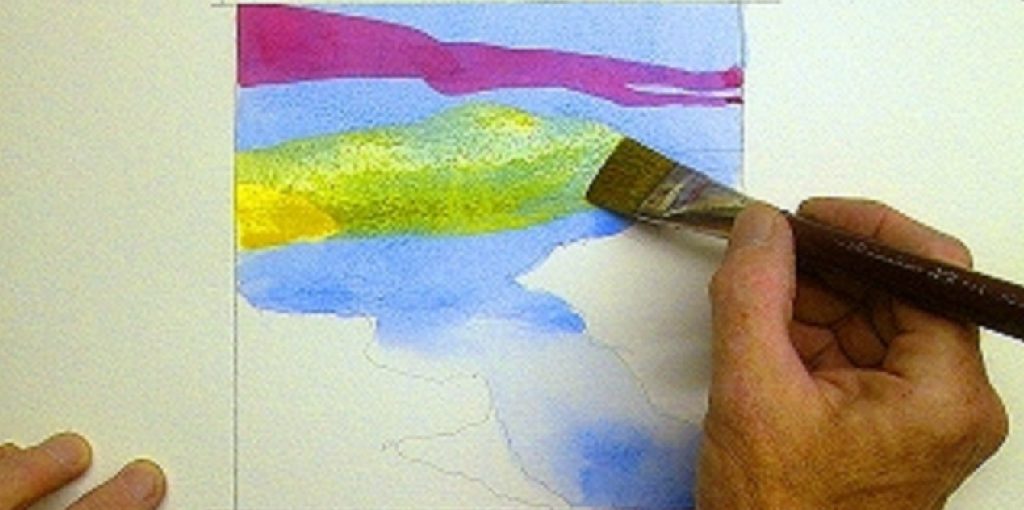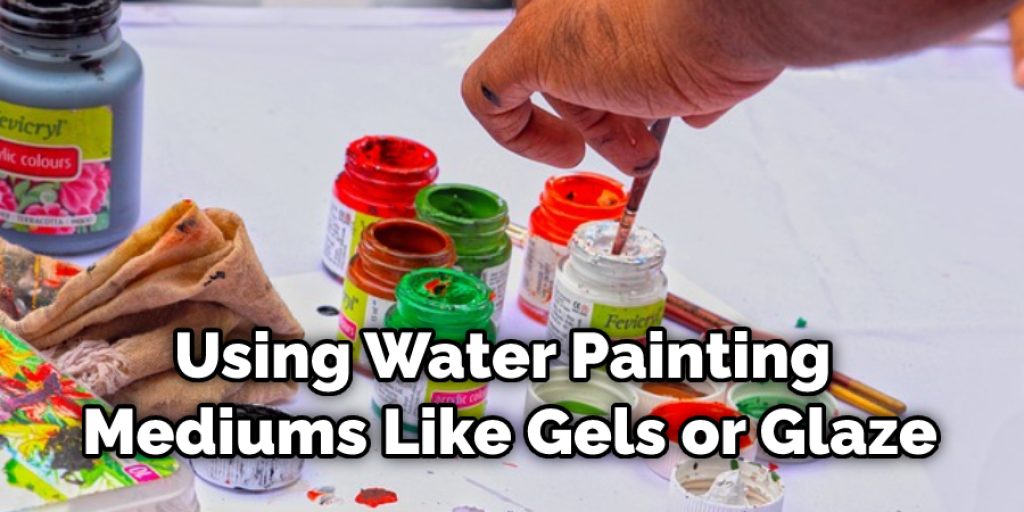How to Make Acrylic Paint Opaque
Acrylic paint is a versatile medium that can be used to create many different types of artwork. Acrylic paint, however, may be transparent and not opaque. This blog post will provide tips for making acrylic painting more opaque to be mixed with other colors or applied as a final layer when dry brushing.

In this blog post, you will learn how to make acrylic paint opaque by adding the following ingredients white gesso, matte mediums such as Liquitex Matte Medium and Golden Open Acrylic Matte Varnish, and gouache, which is an opaque watercolor pigment.
Using these materials in your painting process, you can mix colors or apply them to each other for a more decadent finish to your work. So let’s get started.
10 Ways on How to Make Acrylic Paint Opaque:
1. Apply Gesso:
Gesso, a white water-based primer made of acrylic polymer emulsion and titanium dioxide, is the best way to make any color acrylic paint opaque. Gesso itself can be opaque or translucent depending on how you apply it
2. Use Gouache:
Gouache is a water-based paint that is opaque when dry. It can be used in acrylics with good results if the color you need isn’t available in acrylic or oil paint.
3. Use Medium:
Mediums such as oil or gouache can make acrylic paint opaque and provide other benefits, such as increasing drying time and adding gloss to the paint.
4. Mix With Non-Porous Acrylic Media:
Products like Mod Podge Matte, Diamond Glaze, Glossy Accents, matte medium, and Triple Thick can be mixed into acrylic paint to make it opaque without changing the consistency or appearance of the color.
5. Mix it With Glazing Liquid:
Glazing liquid has the same properties as mediums, but it’s much thinner, easier to mix into the paint, doesn’t affect drying time or glossiness of the substrate, and is translucent rather than opaque.
6. Add Binders to the paint:
Binders are surface-tensioning chemicals that may adhere to various surfaces, reducing paint thickness without affecting pigment adhesion. When you apply a binder to acrylic paint, for example, it becomes opaque since the binder binds itself to the acrylic paint rather than the porous surface you’re painting on.
7. Blend Polymer Mediums:
Liquid polymer clays like Magic Sculp and other polymer mediums can be mixed into acrylic paint to make it opaque and provide increased strength and flexibility to the paint.
8. Add Starch or Non-Reactive Powders:
Additives like cornstarch, powdered non-toxic clay, and talcum powder can change the refractive index of acrylic paint, so it doesn’t reflect light as easily. This makes the paint more opaque. Precious Metal Clay (PMC) is also an additive that does this but becomes more reflective once fired in a kiln, making it suitable for embellishment.
9. Create Stable Mixtures:
Paints with different pigment ratios to binder or resin can be mixed to create stable mixtures that are opaque so long as the balance is correct. This will not change how well the paint adheres to a surface.
10. Create Textured Paint:
Create textured paint by adding dry pigment to wet paint, spraying the paint with a mixture of binder and water, or suspending dry pigment in a diluted varnish or gel wash. The resulting texture can be painted onto any surface to make it opaque.
Procedures on How to Make Acrylic Paint Opaque:
Step 1:
Take your acrylic paint and prepare it. You can use the paint straight out of the tube or thin it using water, painting mediums like gels or glaze, alcohol (like vodka), etc. Mixing three parts of water with 1 part of paint is a good ratio.

Step 2:
Once you have thinned your paint appropriately, add either an equal part of acrylic paint in white or water and mix and stir thoroughly.
Step 3:
Take a clean brush, dip it into your mixture, and spread the paint on a section of your project you want to be opaque. Alternatively, you can pour the mixture over another one if you wish to achieve an even opacity gradient.
Step 4:
Let the paint dry completely. You can use a hairdryer to speed up the drying process. Once dried, compare the dried acrylic paint (left) to your initial mix (right).
Some Additional Tips:
- Using equal parts of water and solvent will no longer make your acrylic paint milky or opaque; it is best to use more solvent than water when making it opaque.
- Making a glaze with transparent paints and adding a matte medium will also help give opacity without sacrificing too much transparency.
- Adding opaque paint to transparent paint will also give opacity without sacrificing transparency.
- Weakly alkaline substances such as soap, ammonia, and household cleaners will prevent acrylic colors from becoming insoluble with water. See the first link for more information on testing which mediums are compatible with your chosen acrylic medium.
- When using acrylic paint as a glaze, the more layers put down, the more opaque and thicker it becomes.
- Always make sure your paints (pigments) and mediums (solvents) are compatible with one another.
Common Mistakes to Avoid:
- Mixing too much paint into the medium. This causes a layer of skin to form on top, preventing the paint from fully absorbing. Once dried, an acrylic coat that looks cloudy is formed all over the model or miniature, ruining your hard work.
- Use water straight out of the tap instead of distilled water. Water from the tap contains minerals and salts that may react with acrylics, preventing them from drying.

- Not allowing the medium to dry properly between coats. Even though acrylic paint is water-based, it will not mix with water and will remain suspended to leave a second coat on top of a still wet first coat. If you don’t allow the first coat to dry completely, the second will peel off with it.
Conclusion:
Acrylic paint is a versatile medium that can be used in both fine art and craft projects. However, one of artists’ most common questions about acrylic paints is how to make them opaque, which means hiding any underlying colors or textures you don’t want visible.
There are many ways to achieve opacity with this type of paint, but using an overlay technique will allow you to control what color appears on top while maintaining your desired base coat underneath. We hope this blog post has given you some insights on how to make acrylic paint opaque. Let us know if there is anything we can do to help you make this process easier.
Read also: How to Make Acrylic Paint Gloss Without Varnish.




